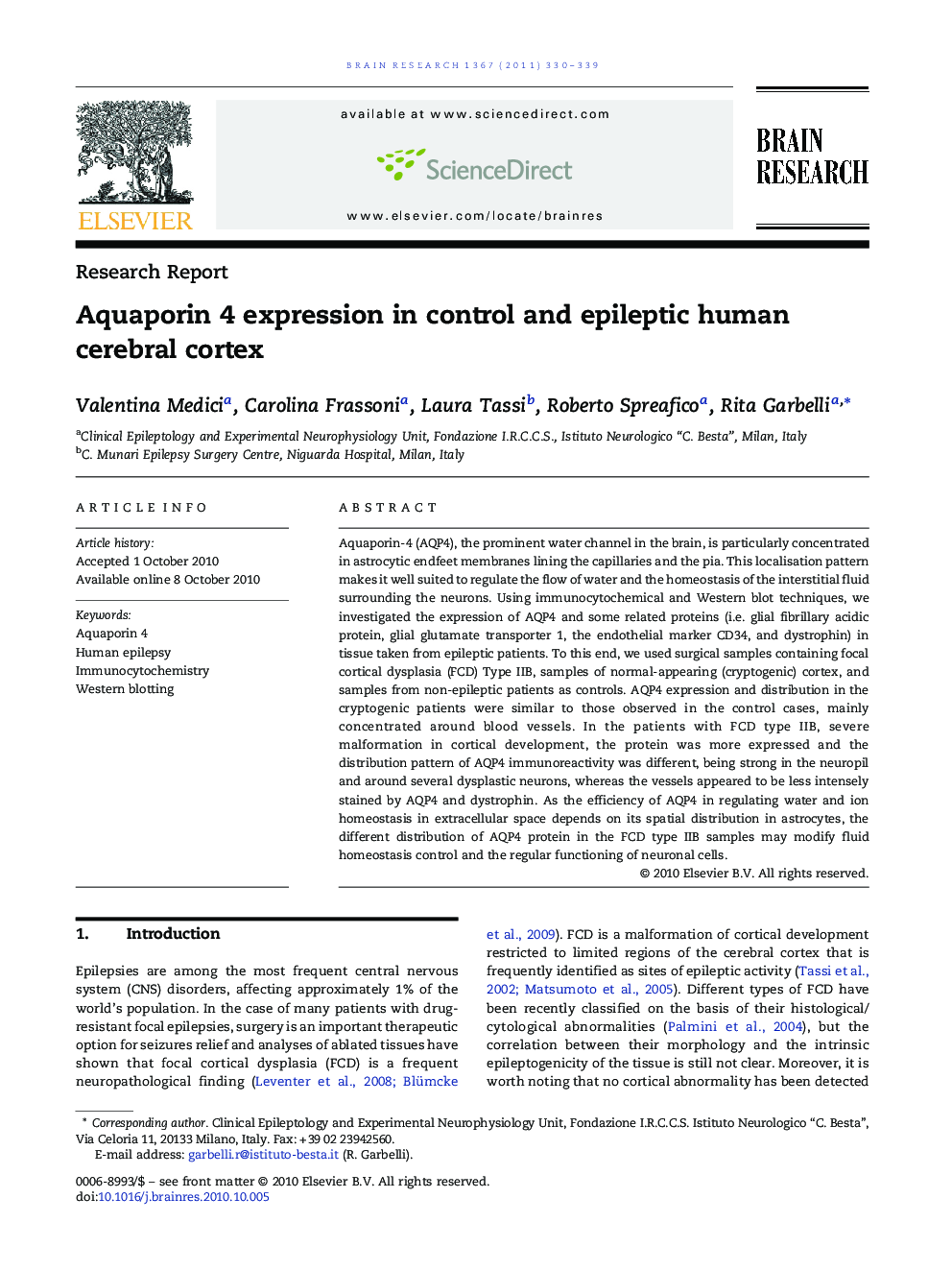| Article ID | Journal | Published Year | Pages | File Type |
|---|---|---|---|---|
| 6265350 | Brain Research | 2011 | 10 Pages |
Aquaporin-4 (AQP4), the prominent water channel in the brain, is particularly concentrated in astrocytic endfeet membranes lining the capillaries and the pia. This localisation pattern makes it well suited to regulate the flow of water and the homeostasis of the interstitial fluid surrounding the neurons. Using immunocytochemical and Western blot techniques, we investigated the expression of AQP4 and some related proteins (i.e. glial fibrillary acidic protein, glial glutamate transporter 1, the endothelial marker CD34, and dystrophin) in tissue taken from epileptic patients. To this end, we used surgical samples containing focal cortical dysplasia (FCD) Type IIB, samples of normal-appearing (cryptogenic) cortex, and samples from non-epileptic patients as controls. AQP4 expression and distribution in the cryptogenic patients were similar to those observed in the control cases, mainly concentrated around blood vessels. In the patients with FCD type IIB, severe malformation in cortical development, the protein was more expressed and the distribution pattern of AQP4 immunoreactivity was different, being strong in the neuropil and around several dysplastic neurons, whereas the vessels appeared to be less intensely stained by AQP4 and dystrophin. As the efficiency of AQP4 in regulating water and ion homeostasis in extracellular space depends on its spatial distribution in astrocytes, the different distribution of AQP4 protein in the FCD type IIB samples may modify fluid homeostasis control and the regular functioning of neuronal cells.
Research HighlightsâºIn control cortex AQP4 is intensely expressed by astrocytes and displays a polarised distribution. âºAQP4 shows a different pattern and increased expression in epileptic FCD IIB patients. âºThese changes could modify the ion homeostasis and the regular functioning of the neurons.
